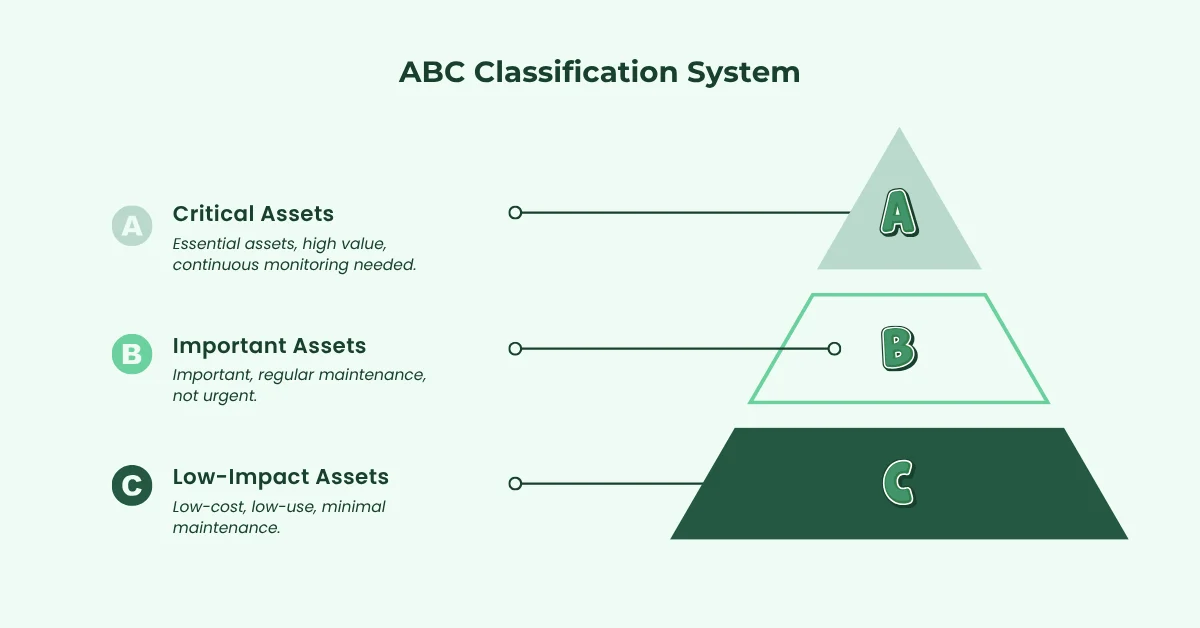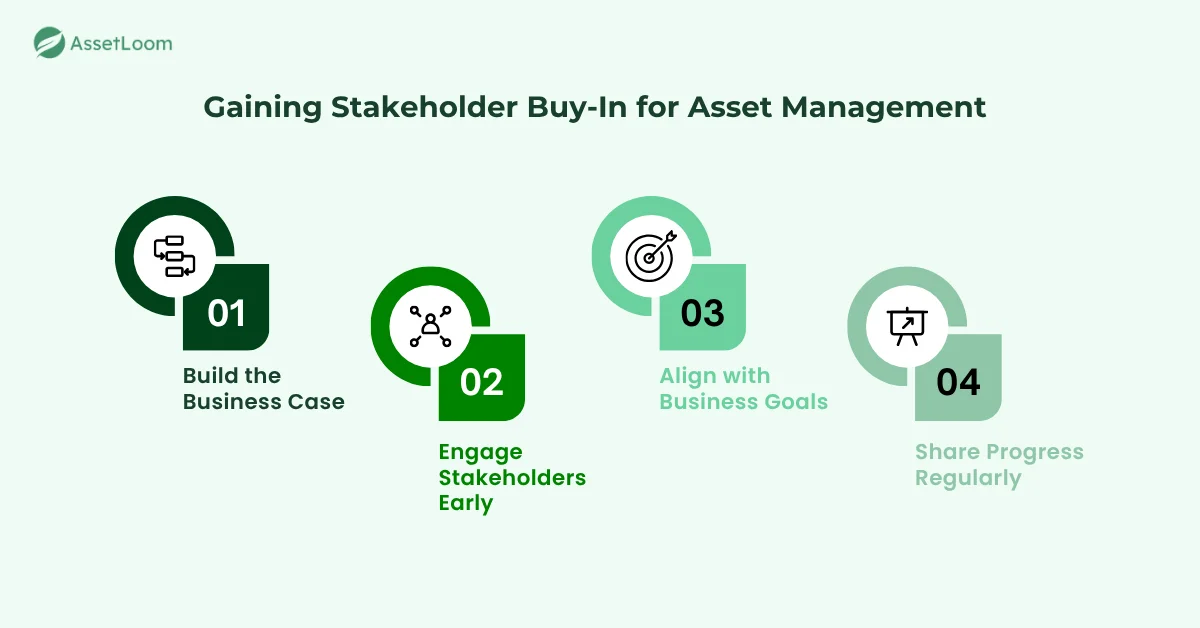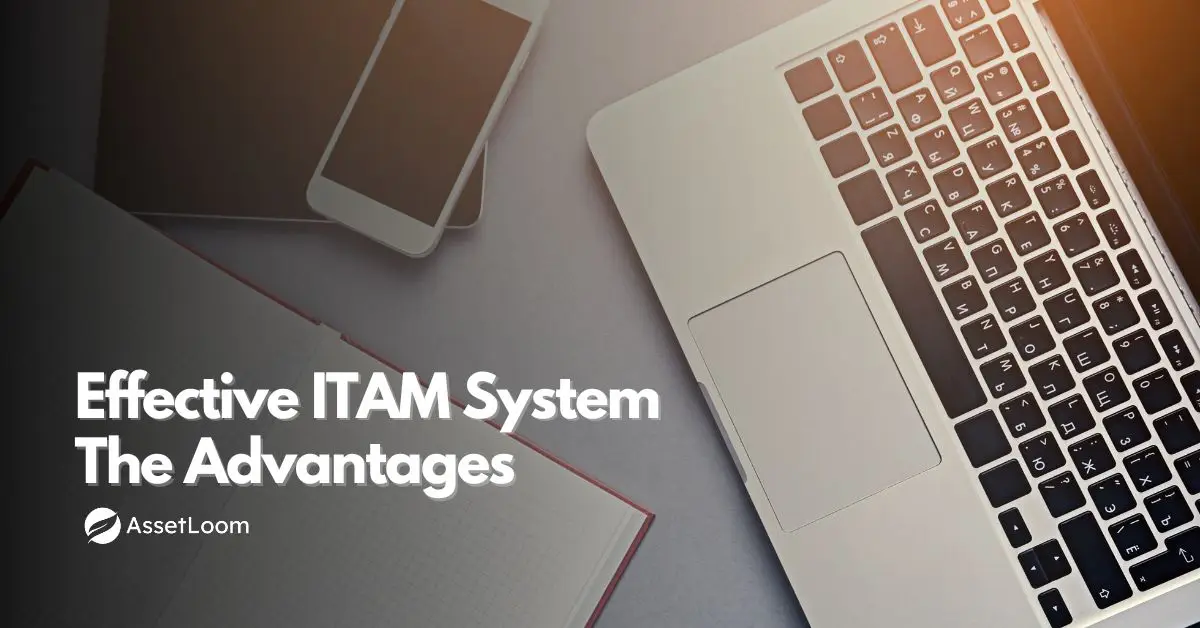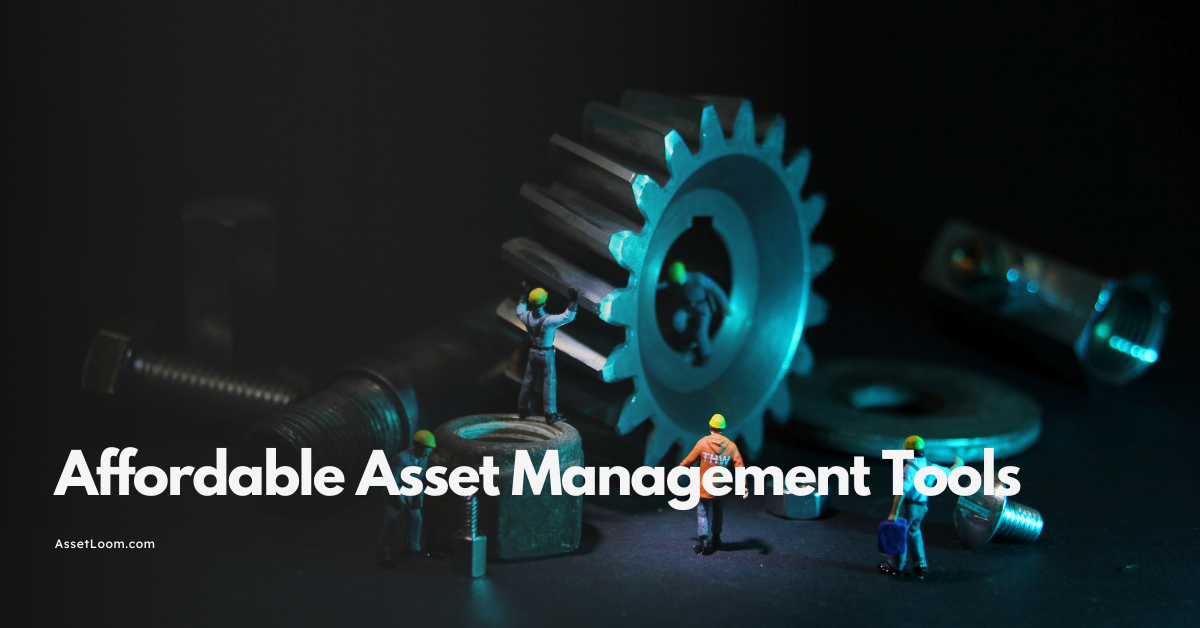How to Fix Poor Enterprise Asset Management Without Overloading
Learn actionable steps to improve poor enterprise asset management efficiently without overwhelming your team, boosting productivity, and reducing costs.
Have you ever searched for a piece of equipment only to find it missing or broken? Or discovered that valuable assets are sitting idle while your team scrambles to make do? These are the hidden frustrations of poor enterprise asset management (EAM), and they cost more than just time. They affect productivity, team morale, and your bottom line.
You don’t have to let asset chaos control your day. In this blog, we will show you practical, easy-to-follow steps to fix poor EAM. You will learn how to get your assets organized, keep your team on track, and reduce waste without creating extra work or stress. Let’s turn asset headaches into a system that actually works.
What is Enterprise Asset Management (EAM)?
Enterprise Asset Management, or EAM, is a comprehensive approach to managing a company’s physical and digital assets throughout their entire lifecycle. It’s more than just keeping an inventory; it’s about ensuring that every asset, from computers and machinery to software licenses and office equipment, is tracked, maintained, and utilized efficiently to support business goals.
A proper EAM system covers the full lifecycle of assets:
- Acquisition: Selecting, purchasing, and onboarding new assets in a way that aligns with business needs and budgets.
- Tracking and Inventory Management: Maintaining accurate records of all assets, including location, usage, condition, and ownership. This prevents loss, duplication, or underutilization.
- Maintenance Management: Scheduling preventive maintenance, inspections, and repairs to extend asset life and avoid costly downtime.
- Utilization Optimization: Ensuring assets are being used efficiently, avoiding idle or overused equipment, and reallocating resources where they are most needed.
- Compliance and Risk Management: Keeping assets compliant with industry standards, safety regulations, and internal policies while reducing security and financial risks.
- Disposal or Retirement: Properly retiring or disposing of assets that are outdated, damaged, or no longer needed, in a safe and compliant manner.
Many organizations use asset lifecycle management solutions to streamline these processes, giving teams real-time visibility, automating routine tasks, and making it easier to track and optimize assets throughout their lifecycle.
Effective EAM not only keeps your assets organized but also drives cost savings, improves operational efficiency, and supports better business decisions. By understanding and managing the asset lifecycle, companies can maximize asset value while minimizing risks and waste.
Risks of Poor Enterprise Asset Management
Managing assets without a clear system can create hidden problems that quietly eat into your time, budget, and efficiency. When enterprise asset management (EAM) is poorly handled, these issues quickly add up.
- Lack of Visibility: Assets get lost, forgotten, or misused, leading to wasted resources and inefficiency.
- Manual Processes and Errors: Relying on spreadsheets or paper logs increases mistakes, duplication, and misallocation.
- Underutilization and Waste: Idle assets result in unnecessary spending and lower ROI on existing resources.
- Increased Maintenance Costs: Reactive maintenance leads to unexpected breakdowns, shorter asset lifespans, and higher repair costs.
- Compliance and Security Risks: Poor tracking can create regulatory and security vulnerabilities, exposing your business to fines or breaches.
- Impact on Productivity and Morale: Difficulty finding or using assets slows teams down and can lower morale, increasing frustration and turnover.
Recognizing these risks is the first step toward improvement. By understanding the impact of poor EAM, you can take practical steps to streamline processes, protect your assets, and make life easier for your team.
How to Fix Poor Enterprise Asset Management Without Overloading Your Team
Improving enterprise asset management (EAM) doesn’t have to overwhelm your team. With the right strategies, you can organize assets, prevent losses, and improve efficiency. Here’s how to go beyond the basics with actionable, practical tips:
1. Conduct a Smart Asset Audit
Start with a full inventory, but don’t stop at simply listing assets. Include details like location, current condition, usage frequency, assigned owner, and any associated maintenance history. Categorize assets by criticality, risk, and business impact. Focus on high-value and high-risk assets first, such as production machinery or IT servers.
Actionable Steps:
- Walk through each department or facility to verify assets physically.
- Cross-check with purchase records and software/license lists.
- Tag or label assets for easier tracking.
- Use the audit to highlight redundant or underused assets for potential reallocation or retirement.
2. Standardize Data Entry
Inconsistent data is one of the biggest hidden challenges in asset management. Without standardization, reports become unreliable and mistakes multiply. Implement uniform fields for asset attributes such as asset type, department, location, condition, and owner.
Actionable Steps:
- Use dropdown menus or checkboxes in your asset management system to reduce typing errors.
- Define clear naming conventions for assets, e.g., “Laptop-HP-EliteBook-1050” rather than “HP Laptop.”
- Regularly review data for inconsistencies and correct errors promptly.
3. Automate Repetitive Tasks
Repetitive manual tasks like maintenance reminders, asset status updates, or report generation consume time and increase the chance of errors. Automation ensures these tasks happen reliably and consistently.
Actionable Steps:
- Set up automated notifications for upcoming maintenance, warranty expirations, or asset relocations.
- Configure your system to flag idle or underused assets for review.
- Generate automated dashboards showing asset utilization, maintenance schedules, or depreciation.
4. Centralize Asset Information
Scattered spreadsheets and departmental silos are major contributors to poor asset management. Centralizing data into a single platform ensures everyone has access to the same information.
Actionable Steps:
- Use a cloud asset management software accessible to authorized users.
- Ensure the system allows search, filtering, and reporting by asset type, location, or department.
- Maintain permission controls so sensitive data is protected while keeping it accessible to the right people.
5. Implement Predictive Maintenance
Instead of waiting for assets to fail, predictive maintenance anticipates problems using historical data and usage patterns. This approach reduces downtime, extends asset lifespans, and saves money on emergency repairs.
Actionable Steps:
- Track usage, performance, and failure history of critical assets.
- Set thresholds for alerts, e.g., hours of use, wear indicators, or error reports.
- Schedule maintenance or inspections proactively based on these predictions.
- Where possible, use sensors or IoT devices to monitor performance in real time.
6. Prioritize High-Impact Assets
Not all assets deserve equal attention. Prioritizing ensures that your team focuses on items that have the biggest impact on operations, revenue, or compliance.
Actionable Steps:
- Use an ABC classification system: A for critical assets, B for important assets, C for low-impact assets.
- Focus audits, maintenance, and monitoring primarily on “A” assets.
- Reallocate or retire low-priority assets to free up resources.

7. Provide Micro-Training for Your Team
Long, intensive training sessions are overwhelming and often ineffective. Instead, offer short, targeted modules that teach specific tools or processes.
Actionable Steps:
- Break training into 10-15 minute segments focused on one process at a time.
- Offer quick guides, videos, or cheat sheets for reference.
- Provide hands-on exercises, like updating asset status or generating a report.
- Schedule periodic refreshers to reinforce best practices.
8. Set Up Continuous Improvement Loops
Asset management should evolve over time. Regular reviews help identify errors, process inefficiencies, or new opportunities for improvement.
Actionable Steps:
- Schedule monthly or quarterly reviews to check data accuracy, maintenance completion, and asset utilization.
- Collect team feedback on processes and software usability.
- Implement small, incremental changes rather than major overhauls to avoid overwhelming your team.
9. Connect Asset Management to Business Goals
When your team sees how asset management impacts company performance, they are more motivated to follow best practices.
Actionable Steps:
- Show the direct link between accurate asset tracking and outcomes like cost savings, reduced downtime, or regulatory compliance.
- Include asset management metrics in performance reviews or team dashboards.
- Share success stories where improved asset management had a tangible business impact.
10. Build a Culture of Accountability
Clear ownership ensures tasks are done consistently and reduces the risk of errors.
Actionable Steps:
- Assign ownership for each asset or asset category to specific team members.
- Clearly define responsibilities such as updating records, monitoring usage, performing maintenance, and reporting issues.
- Track accountability through regular reviews and reporting.
By applying these actionable strategies, you can transform poor enterprise asset management into a streamlined, efficient system that saves time, cuts costs, and empowers your team to work smarter.
Best Practices for Maintaining Effective Asset Management
Once you’ve addressed the biggest gaps in enterprise asset management (EAM), it’s important to maintain practices that keep the system running smoothly.
Keep asset data consistent by regularly updating records and following standardized naming and classification rules. Schedule regular maintenance for critical assets, including preventive checks and routine inspections, to extend asset life and prevent downtime.
Involve your team by encouraging them to report issues, update records, and follow procedures. Use scalable tools that grow with your organization to avoid frequent system changes as asset volume increases.
Monitor key metrics like asset utilization, downtime, maintenance completion, and cost per asset to identify inefficiencies or risks early. Incorporating IT asset management (ITAM) practices can further ensure digital and physical assets are tracked and optimized effectively.
Finally, review and refine processes regularly with small adjustments to keep your system accurate, efficient, and aligned with business goals.
These practices help maintain a reliable EAM system, reduce operational risk, and allow your team to focus on high-impact tasks.
How to Get Buy-In from Key Stakeholders
Getting buy-in from key stakeholders is essential for successfully implementing improvements in asset management. Here's how you can ensure that leadership and other important stakeholders support your efforts:
1. Build a Strong Business Case
Start by clearly communicating the value of a streamlined asset management system. Focus on the benefits: cost savings, improved efficiency, and risk reduction. Use data from initial audits or asset performance reviews to highlight areas for improvement and the potential savings these changes can bring.
2. Engage Stakeholders Early and Often
Involve key stakeholders from the beginning. Hold regular meetings with team members and departments to gather their feedback and understand their needs. By addressing their concerns early on, you create a sense of ownership, making them more likely to support the initiative.
3. Align Asset Management with Business Goals
Tie your asset management strategy to broader business objectives. Whether it’s reducing downtime, improving compliance, or lowering costs, showing how asset management supports these goals makes it easier to gain executive support.
4. Demonstrate Progress with Regular Updates
Once you’ve made improvements, share the results with your stakeholders. Whether it’s cost savings, fewer equipment failures, or better data accuracy, tracking and communicating progress shows that your efforts are paying off and strengthens ongoing support.
By clearly demonstrating the value of asset management and involving stakeholders at every stage, you ensure that they’re on board and committed to the success of your initiative.

The Benefits of Fixing Poor Enterprise Asset Management
Fixing poor enterprise asset management (EAM) brings significant advantages across various aspects of your business. Here’s how improving EAM can benefit your organization:
- Cost Savings: Eliminate inefficiencies like redundant purchases and underutilized assets. Timely maintenance prevents costly repairs and replacements.
- Improved Operational Efficiency: Streamline asset management to quickly identify and fix issues, reducing downtime and ensuring smoother operations.
- Better Decision-Making: Real-time, accurate data allows for informed decisions on asset allocation, budgeting, and maintenance, aligning with business goals.
- Enhanced Compliance and Risk Management: Proper asset tracking ensures compliance with industry regulations and reduces risks like fines or legal penalties.
- Increased Asset Lifespan: Proactive maintenance and optimized use extend the life of assets, lowering the frequency of costly replacements.
- Boosted Employee Productivity: Employees spend less time searching for or dealing with faulty equipment, resulting in higher productivity and improved morale.
By addressing poor EAM, your organization can unlock greater efficiency, reduce costs, and enhance overall performance.
Conclusion
Improving enterprise asset management (EAM) is essential for boosting efficiency and reducing costs. By addressing poor asset management practices, you can save money, improve operations, and make better decisions.
Implementing the right strategies, like using technology, standardizing processes, and prioritizing key assets, will empower your team and protect valuable resources. Start making these changes today to unlock the full potential of your asset management system and set your business up for long-term success.

Related Blogs
Subscribe for Expert Tips and Updates
Receive the latest news from AssetLoom, right in your inbox.

